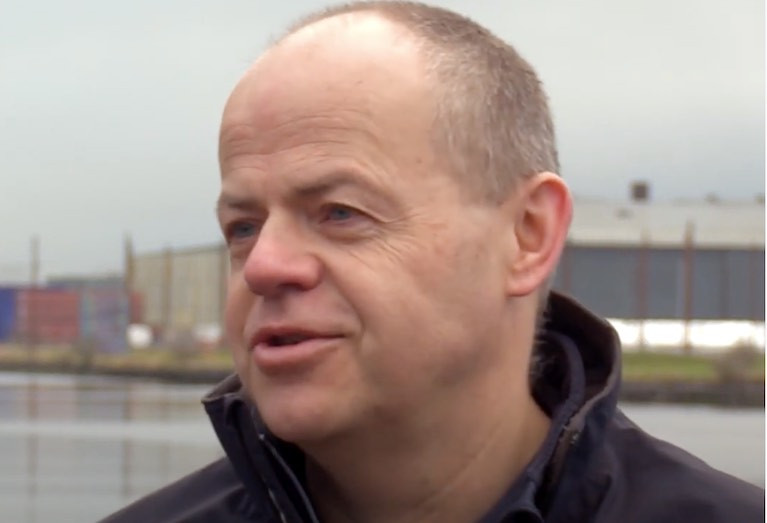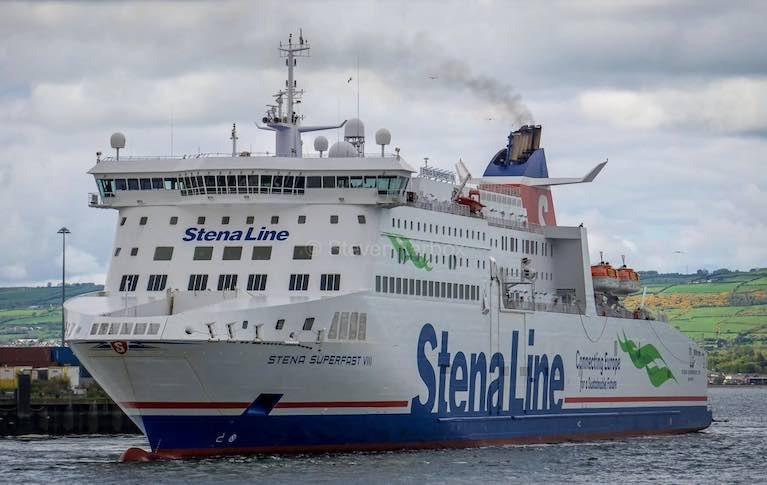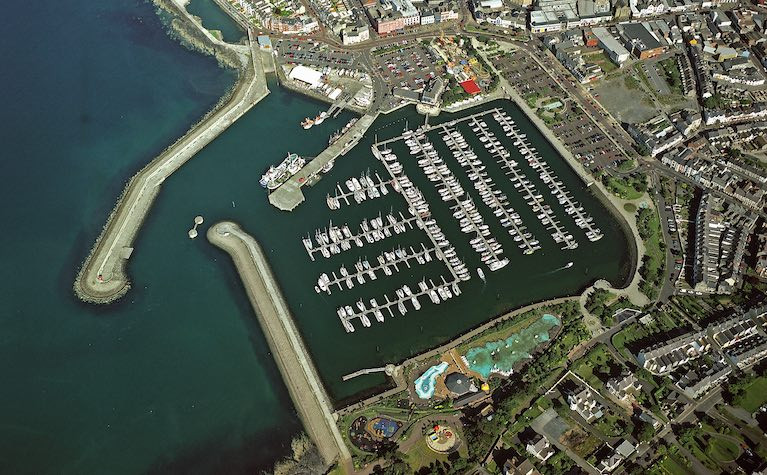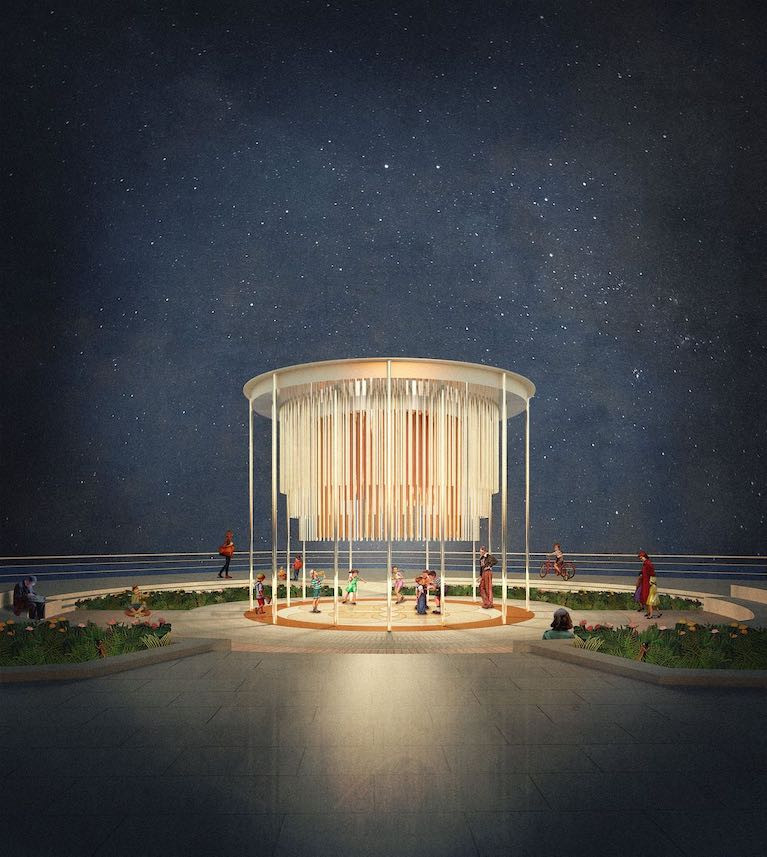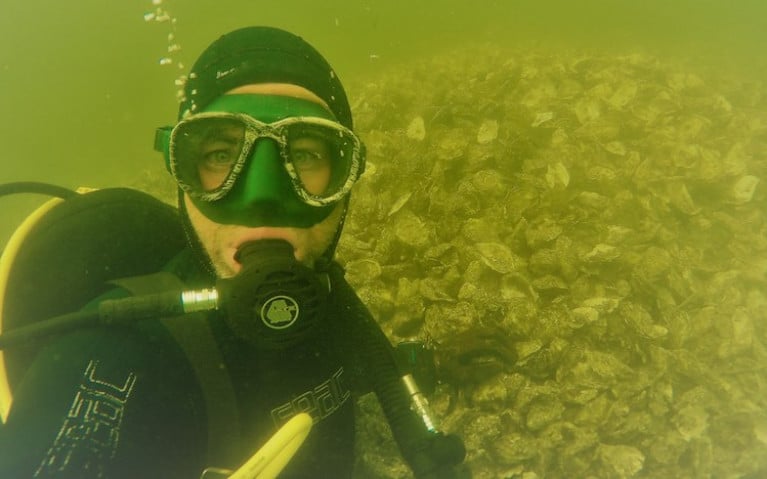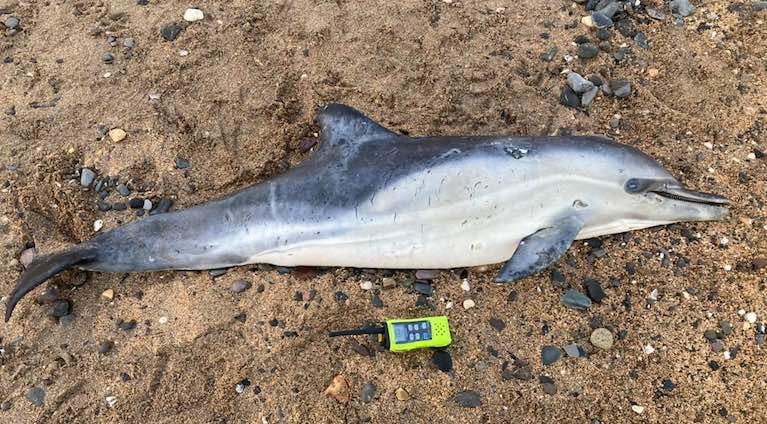Displaying items by tag: Belfast Lough
Harland & Wolff Shipyard Celebrate 160 Year Anniversary
Harland & Wolff, the national strategic asset, with four leading shipyards and fabrication facilities based in Belfast, Appledore, and Scotland is proud to be celebrating its 160th anniversary.
Founded on April 11 1861 by Sir Edward James Harland and Gustav Wilhelm Wolff, its heritage includes work on some of the most iconic ships, including the famous RMS Titanic, RMS Olympic and HMHS Britannic, right through to the SS Canberra for P&O and the Myrina tanker – the first supertanker built in the UK.
John Wood, Group CEO commented: “It is a great privilege to celebrate 160 years of Harland & Wolff. It is a brand that is steeped in history and is now going through a pivotal change that will see it industry-leading once again.
We have already started to invest in all our facilities, from Wilma the robotic welder in Belfast to the complete restoration of the Appledore dock gates. As technology advances, we are keen to adopt new and better ways of doing things across all of our facilities to ensure we are internationally competitive.
As we recruit the next generation of shipbuilder and fabricators through our apprenticeship scheme, you will not just see ships being built under Samson and Goliath, you’ll see work from across all our five markets from wind farm jackets to bridges, and warships.”
Pioneering twenty-first century offshore and maritime engineering, Harland & Wolff operates throughout five markets, offering six key services. Its Belfast yard is one of Europe’s largest heavy engineering facilities, with deep water access, two of Europe’s largest drydocks, ample quayside and vast fabrication halls. As a result of the acquisition of Harland & Wolff (Appledore) in August 2020, the company has been able to capitalise on opportunities at both ends of the ship-repair and shipbuilding markets where there is significant demand.
In February 2021, the company acquired the assets of two Scottish based yards along the east and west coasts. Now known as Harland & Wolff (Methil) and Harland & Wolff (Arnish), these facilities will focus on fabrication work within the renewable, oil and gas and defence sectors.
Harland & Wolff is a wholly-owned subsidiary of InfraStrata plc (AIM: INFA), a London Stock Exchange-listed firm focused on strategic infrastructure projects and physical asset life-cycle management.
In addition to Harland & Wolff, it owns the Islandmagee gas storage project, which is expected to provide 25% of the UK’s natural gas storage capacity and to benefit the Northern Irish economy as a whole when completed.
Belfast Coastguard's Hoax Caller
Coastguard and Lifeboat rescue teams have been extremely busy over the Easter Weekend and of course, answer distress calls without hesitation. But Belfast Coastguard Operations Centre has reported a hoax call.
Both Bangor and Portaferry Coastguard Rescue Teams were tasked to a vessel, possibly in distress near Ballywalter on the eastern Co. Down coast. Whilst they were proceeding to the scene, they received a call reporting a person in the water, and in serious difficulty in Killyleagh on the western side of Strangford Lough.
Both Coastguard Rescue Teams were diverted to the person in the water and Portaferry Lifeboat was also requested along with the Police Service. Belfast Coastguard said, "This was a hoax call. It tied up multiple Search and Rescue units, along with police, and someone who may have actually needed us had to wait. Please do not make hoax calls. Hoax calls cost lives".
Bangor Marina Reopens After Lockdown on Belfast Lough
It isn't an April Fool! Thursday will be to Bangor Marina berth holders the end of a long-awaited return to their craft after a roller coaster of lockdown, opening up and lockdown again over the past year.
In Harbour Master Kevin Baird's welcome email to berth holders yesterday he said "We have spoken with and taken advice from the British Marine Federation, the RYA NI, the UK Harbour Masters Association, as well as consulting with healthcare professionals in order to try and navigate through these extraordinary times". And added, " Last week, Boris Johnson added 'fresh air' to the Coronavirus slogan, as sea-loving folk, we already know that sailing and boating provides that clean, fresh sea air which at this time of the year can blow with considerable strength".
There has been an update to the Regulations (Amendment 6) that outlines aspects from 1st April 2021 - up to 10 people (including children of all ages) from a maximum of two households can take part in outdoor sports activities. He added, "In the reading of these, it would be our understanding that restricted access to the Marina may be permitted".
But the reception, washrooms and laundry will remain closed and overnighting on board is strictly prohibited. The Marina is also closed to visiting craft.
Although reception is closed, staff can be reached by telephone; +44 (0) 28 9145 3297; email [email protected] or VHF Ch 80 or Ch11
Kevin sought to reassure boat owners, "These strange times will not last forever, and the sea will still offer solace when we all need it, and when the time is right".
Belfast Lough based Artemis Technologies, which is leading a programme to develop a new class of zero-emission high-speed vessels, has unveiled the world's most advanced marine simulator in Northern Ireland. The simulator represents a multi-million-pound investment over the past decade by Artemis Technologies and the Artemis Racing professional sailing team.
The company will use the simulator to streamline the development process and prototyping of the company's Artemis eFoilerTM electric propulsion system and new green high-speed vessels, targeting the ferry and workboat markets.
Double Olympic champion Dr Iain Percy OBE, CEO of Artemis Technologies, had revealed the installation of the simulator ahead of the America's Cup, of which he is a four-time veteran. "We originally built the simulator for Artemis Racing taking part in the America's Cup, and are hugely excited to bring this incredible technology to Northern Ireland. There is nothing else like this in the world, it's the most advanced of its kind, and it's right here. Behind the device is all our collective learning, over 10 years and hundreds of millions of pounds in investment, learning about the marine environment and how vessels operate in that environment. The result is when we want to test something new, like a zero-emission vessel, we can confidently do that."
The simulator features a 4.5 metre high, 210-degree screen, which conveys images from three projectors, wrapped around a physical platform similar to those used for flight and motorsport simulators, providing an incredibly immersive experience.
It forms part of Artemis Technologies' roadmap to creating a high-tech maritime innovation hub in Northern Ireland. With the Belfast Maritime Consortium, we are trying to create a number of world's firsts, the first ever zero-emission high-speed fast ferry. As this has never been done before, by definition, you need a digital twin.
The simulator will continue to be used by high-performance professional sailing teams from across the world and is expected to attract interest from the commercial maritime sector.
Artemis Technologies is the lead partner in the Belfast Maritime Consortium which brings together a range of established and young firms, academia and public bodies, including: Ards and North Down Borough Council, Belfast City Council, Belfast Harbour, Belfast Met, Catalyst, Creative Composites, Invest Northern Ireland, Northern Ireland Advanced Composites Engineering (NIACE), Power NI (Energia Group), Queen’s University Belfast, Spirit AeroSystems, and Ulster University.
More here
Staff numbers at Artemis Technologies, which is leading a Belfast Lough-based consortium to decarbonise maritime, are expected to almost treble to 70 by the end of 2021 and rise to 100 by this time next year.
It is part of a major recruitment drive by the company as it ramps up its programme to develop and build a new class of zero-emission fast ferries in the city.
The £60-million project, backed by UK Research and Innovation’s flagship Strength in Places Fund is being led by the company’s Chief Operations Officer, Professor Mark Gillan.
He said: “This is an incredibly exciting time for Artemis Technologies, and the wider maritime sector, as we make strides towards a net-zero future for the industry, both in the UK and across the globe.
“Operating from Northern Ireland, together with our partners in the Belfast Maritime Consortium, we are working to deliver transformative new technology that will revolutionise maritime transport.”
A native of Co Down, Mark has held engineering leadership across the world, including senior roles in Formula One with McLaren, Jaguar/Red Bull, Toyota, and as Head of the Race Team at Williams.
He added:“We are recruiting for a number of key roles throughout the organisation and are particularly interested in hearing from exceptional potential candidates in the fields of flight control and complex systems engineering and electronics, project planning, procurement, electric drive train, naval architecture, and a range of support and administration roles.
“Many of these are jobs that simply did not exist in Northern Ireland a year ago. There is a huge opportunity here to ensure that we, as a region, hold on to our most talented minds while also attracting leading global experts.
“Our programme of works is really capturing people’s imaginations, and there is a real sense of pride of being part of something that will change the world, with Northern Ireland at the very heart.”
Harnessing knowledge that combines technology from the America’s Cup and Formula 1, the vessels to be developed in Belfast will be powered by the unique Artemis eFoilerTM electric propulsion system.
Belfast Coastguard Rescue team was contacted this week by the Stena Superfast ferry inbound to Belfast in the shipping channel near Holywood.
On Monday, January 25th the ferry had encountered a lone paddleboarder dangerously close to the vessel. Holywood is on the south shore of Belfast Lough about four miles east of the city of Belfast. The Coastguard also had multiple reports from concerned citizens.
The ship used its horn to warn the person about being too close and contacted the Coastguard. Once on scene the team located the paddleboarder and kept eyes on. He managed to paddle his way back to shore. Bangor Lifeboat was also tasked to the incident and was stood down on route.
After speaking to the paddleboarder, it was confirmed he was intending to surf the wash from the ferry. The team warned of the dangers of being too close to such large vessels and about the dangers of being in the shipping lane.
Green Electricity for Bangor Marina on Belfast Lough
Bangor Marina on Belfast Lough is switching its electricity to a renewable source with immediate effect.
Marina Manager Kevin Baird said the marina takes its responsibility to the environment seriously and is constantly looking at ways in which it can reduce its impact on the planet.
"We estimate this fully renewable supply reduces our carbon emissions by up to 1000 tonnes a year compared with traditional carbon led electricity supplies, which is a massive positive impact", Baird said.
Northern Ireland's biggest marina is part of a network of 11 'boatfolk' operated marinas around the UK all now sourcing fully renewable electricity, and with minimal impact to the price.
The facility at Bangor is a multiple winner of the Blue Flag Award and a Five Gold Anchor Marina. There are facilities for 550 berths with berthing for 50 visiting craft. Laundry, showers, trolleys and local advise provided for sailors.
Baird told Afloat "We're on a journey to reduce our carbon footprint and this is a crucial next step on that journey. 2021 is an important year for the world's efforts to tackle climate change and choosing 100% renewable electricity isn't just a 'feel good' thing to do, it's something that has a very real impact."
SoundYard Added to Belfast's Maritime Heritage Experience
The Maritime Mile is an initiative developed by Maritime Belfast Trust and is a curated experience that connects and celebrates Belfast's vibrant heritage waterfront. It was set up originally to deliver the Titanic Belfast Visitor attraction and now includes many projects dotted on the waterfront through which flows the River Lagan. Among the projects on what is a ten-kilometre trail are the SS Nomadic, a tender to the Titanic and the last remaining White Star Line ship in the world; HMS Caroline, a light cruiser and the only surviving battleship from the Battle of Jutland, and the Titanic Slipways.
 HMS Caroline Photo: National Historic Ships
HMS Caroline Photo: National Historic Ships
And now later this year another exciting new outdoor visitor experience will be added by Belfast Harbour - this time through sound - bringing to life part of Belfast's maritime heritage story.
Approvals are now in place for this impressive all-weather structure which will be located on the waterside, next to the Odyssey Complex and Belfast Harbour Marina, which was once the site of a brass foundry and Kelly's Coal yards. The design and sound were inspired by the noise of striking metal emanating from the old shipyards.
SoundYard will celebrate Belfast's maritime heritage, add to the animation, accessibility, and vibrancy of the Maritime Mile, as well as help reconnect and educate children and adults of the significance of the shipyard. Children will enjoy the sensory experience whilst playing within the structure while adults connect with the sound and interpretation within the site. In response to ongoing Covid-19 guidelines, the installation will be activated by motion sensors to avoid children touching the apparatus.
The structure's unique design was the winning submission of the Royal Society of Ulster Architects Early Career CityPlay Design competition in 2019. The talented young architects, Hannah Wilson, Matthew Kernan and Eunan Deeney, were inspired by the noise of striking metal from the old shipyard works and the sounds from repurposed metal pipework. The team also considered the circular economy for the built environment, and how elements have been designed with re-use, repurposing and recycling in mind.
 SS Nomadic
SS Nomadic
The project has been funded by Tourism NI, Maritime Belfast Trust, JP Corry and Belfast Harbour, with collaborative partnerships with the Royal Society of Ulster Architects, Todd Architects and the Odyssey Trust.
Kerrie Sweeney, Chief Executive of Maritime Belfast Trust, said: "We are delighted to have this opportunity to team up with young architects, stakeholders and former shipyard employees to develop this amazing project, The SoundYard project aims to create a new bespoke play experience along the Maritime Mile and will also attract local communities and reconnect them with the city's iconic waterfront, especially during these difficult times. It brings the heritage and story of the former Shipyard into the heart of Belfast, a community that has contributed so much to our maritime economy past and present."
Joe O'Neill, Chief Executive of Belfast Harbour, added " Creating an iconic waterfront for the city and vibrant inner harbour is one of Belfast Harbour's key strategic goals. Our partnership with Maritime Belfast Trust plays a vital role in helping us to deliver this ambition and the SoundYard project is an element in a wide range of activities supporting the delivery of this goal and creating an area in which people want to work, live, invest and relax".
Tourism NI Director of Product Development, Rosemarie McHugh, said: "The new tourism brand Northern Ireland Embrace A Giant Spirit, is based on what we know visitors enjoy when they come to Northern Ireland – the giant spirit of the people, authentic local experiences and stories, and our magnificent landscape. This project by the Maritime Belfast Trust is another exciting addition to the visitor experience along Belfast's Maritime Mile".
Ronnie West, Civils Products sales Manager at JP Corry, commented: "It has been a pleasure for JP Corry to work with the RSUA to support innovation and design in the NI construction sector. The SoundYard has been a tremendous achievement by Hannah, Matthew and Eunan, against stiff competition, to design and bring to life such a fitting and tributary concept, wonderfully situated in the historic Titanic Quarter. It is sure to be enjoyed by many for years to come."
The SoundYard will be free to visit and open to the public later this year.
The Maritime Belfast Trust is working on several initiatives to enhance the Maritime Mile initiative, to attract more local people and visitors, and provide greater opportunities for engagement with the story of what was once, the largest shipyard in the world.
“Good news everyone”, the natives have returned...” It’s not your average title to a scientific paper, but this one has reason to celebrate - hailing the return of native oysters to Belfast Lough after a century.
The paper by Bangor University researcher David Smyth and fellow scientists was published this month in the journal Regional Studies in Marine Science.
It documents how the European flat oyster Ostrea edulis has been confirmed in small numbers in Belfast Lough, and speculates on reasons why, such as shipping movements.
 One-year-old native oyster spat in south Galway Bay Photo: Cuan Beo project
One-year-old native oyster spat in south Galway Bay Photo: Cuan Beo project
Afloat reported on the unexpected return of the Belfast wild oysters last month here.
Marine Institute shellfish expert Oliver Tully spoke to Wavelengths about the significance of the find, and about how it is a reminder of the former abundance of native oysters along the east coast – an important food source along with Molly Malone’s “cockles and mussels”.
Heavy fishing, mainly by British vessels, rendered the oyster beds, which were particularly healthy off the Wicklow and north Wexford coasts, extinct. There were reports of tens of millions of oysters being exported into Britain in the mid 19th century.
 Native oyster on the sea bed in south Galway Photo: Cuan Beo project
Native oyster on the sea bed in south Galway Photo: Cuan Beo project
Tully says it is also a reminder of the importance of fisheries management – at a time of much uncertainty about same in the wake of Brexit.
He is involved in several native oyster restoration projects on the west coast, from Lough Swilly in Donegal down to Tralee Bay, and including the Cuan Beo project in south Galway bay.
 200 tonnes of cultch getting ready to deploy
200 tonnes of cultch getting ready to deploy
You can hear more about that project and the work of Cuan Beo, as explained by Tully, Noreen Cassidy and fisherman David Krause, below in the Afloat
podcast
Last Wednesday (January 6th) Bangor Coastguard Team answered a report of a cetacean washed up on Crawfordsburn Beach on Belfast Lough. It was identified on social media as a Common Dolphin and it was suggested that the find should be reported to the Irish Whale and Dolphin Group.
The sandy beach lies on the south shore of the lough and is measured by NIDirect Government Services as having excellent water quality.
The team took measurements, photos and completed the relevant paperwork before returning to the coastguard station.



























